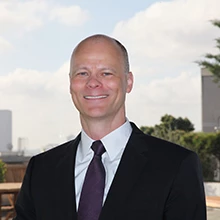 Children in the camp for internally displaced persons (IDPs) located at M'poko Airport in Bangui, capital of the Central African Republic.
Children in the camp for internally displaced persons (IDPs) located at M'poko Airport in Bangui, capital of the Central African Republic.
Children and tents along the runway and livestock running across it: that was what passengers first saw when flying into Bangui, the capital of the Central African Republic, during the 2013-2017 period. At its peak, as many as 100,000 internally displaced people (IDPs) were living in scrapped planes and squalid conditions in M’poko International Airport, where they had sought refuge from fighting. They couldn’t go home to their old neighborhoods where they would have fallen preys to armed groups. They couldn’t move elsewhere without losing access to water, electricity, and aid. They were stuck. They had to live with no prospects, for years, in scrapped planes.
The international spotlight is on refugees who cross international borders. But in fact many people who are fleeing conflict and violence, often the most destitute, cannot afford to go that far and remain displaced within their own country : these are the IDPs. Take one example: according to UNHCR about 90 percent of the 4 million people who had to flee their homes in Yemen are still in country, facing famine in the worst humanitarian crisis in the world.
And these situations tend to linger for long periods of time. Many IDPs have been in displacement for years, if not decades – some IDPs in Colombia for example have been displaced since the 1980s or even earlier… Many IDPs have remained displaced from previous conflicts, and continued tensions, sporadic violence, poor policies, or inescapable vulnerabilities have hindered their ability to find a new path.
This is a significant development problem, with about 45 million conflict-induced IDPs who are often trapped in poverty, with specific vulnerabilities stemming from their loss of assets, trauma, stigmatization, and short planning horizon. Their presence can also impact the development prospects of host communities.
Supporting IDPs is not new for the World Bank – almost 90 projects have targeted IDPs or the areas they reside in the last 20 years, while many more have benefited from its work in poor and disadvantaged communities. But the question is – can the World Bank do more to reach them and improve their lives?
A new World Bank Group paper on conflict-induced internal displacement outlines several recommendations for the institution to further step up its support to IDP populations and their hosts – as a development player with a medium to longer term perspective and expertise in the socio-economic realm, keenly aware of the broader environment in which such support could be provided.
First, conflict analyses as well as socio-economic data on IDPs and their hosts are crucial for an improved development response, since development efforts are part and parcel of efforts to reduce or prevent future conflict. In contexts where real and perceived grievances have turned populations against each other, we need to make sure that external assistance does not exacerbate the conflict or create new fault lines . Effective programming also requires a thorough understanding of the factors that drive the displacement and make it harder for those displaced to forge a new life – whether or not they return home.
Second, support needs to be provided to both the IDPs and their hosts, in a fair manner. In conflict-affected situations where a majority of the population suffers from the consequences of violence and destruction, support for displaced people needs to be provided as part of a broader effort to assist all vulnerable groups like orphans, female-headed households or victims of violence. This is about needs, not status.
Third, the response needs to be based on context and there is no one-size fits all model. A solid understanding of the situation and of the government’s perspectives and policies can help guide assistance. For example, in contexts characterized by high level of violence, development actors will play a minor role and the priority may be for emergency programs and humanitarian assistance. In other countries, where IDPs are living in a stable environment, the focus may be on creating socio-economic opportunities and reducing discriminatory policies and practices. And yet, in other areas, where access is possible but the situation remains uncertain, efforts can aim to help provide more stability and prospects for the IDPs.
Fourth, mainstreaming is key – wherever possible. Internally-displaced persons are among the most vulnerable and marginalized in their community, and singling them out from their compatriots can lead to further tension . Special programs and parallel funding mechanisms and interventions may prove counterproductive. Ensuring their inclusion in mainstream development projects, in line with the Environmental and Social Framework (ESF) at the World Bank is likely to result in more and better support. Any dedicated support should instead be focused on addressing the specific factors that hinder IDPs’ ability to benefit from such interventions.
Fifth, we need more than projects: this is also about government policies. This is about fighting marginalization and discrimination, and ensuring IDPs can fully access services through national systems, including schools, health centers, and social protection. It is about creating an economic environment in which there are jobs and other opportunities for both IDPs and their host communities. For development actors, supporting the necessary policy reforms -- and the corresponding institutions – is of critical importance .
Sixth, success requires working in partnership with others – the IDPs themselves, civil society organizations, the private sector, local and national host governments, and international partners -- both humanitarian and development actors. This needs dedicated time and resources and is challenging, especially in countries where the government’s actions are the cause of displacement and where we need to engage without making the problem worse.
And last, but most importantly, we need to be clear about the end goal. Many IDPs who have spent extended periods in displacement do not necessarily wish to go back to their original homes where economic prospects were often limited. What then marks the “end of IDP-ness”? Recent guidelines issued by the Expert Group on Refugees and IDP Statistics (EGRIS) under the UN Statistical Commission provide a helpful framework: it is when they have reached living conditions that are at par with the people they live next to -- the host communities.
Many of these recommendations have been applied since 2016 in the Yemen Emergency Crisis Response Project, for example, which has included IDPs along with other vulnerable, targeted communities. In the midst of conflict, the project has provided wage employment to around 430,000 vulnerable people in IDP hosting areas, and almost 83,000 of these jobs went to IDPs and returnees, while also providing increased access to community infrastructure and services for those displaced and their hosts. This is just one instance where the World Bank’s mandate to eradicate extreme poverty and support shared prosperity has required us to work with all our partners to ensure inclusion of IDPs in our development efforts – especially in the most difficult contexts.




Join the Conversation